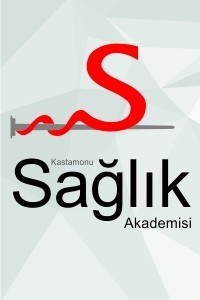O ESPAÇO VERDE DO BAIRRO ESTÁ ASSOCIADO AO AUMENTO DA CONEXÃO À NATUREZA EM ADULTOS E IDOSOS
Natureza, Environment, Áreas Verdes, Acelerometria, Atividade Física
NEIGHBORHOOD GREEN SPACE IS ASSOCIATED WITH INCREASED CONNECTEDNESS TO NATURE IN ADULTS AND OLDER PEOPLE
Nature, Environment, Green areas, Accelerometry, Physical Activity,
___
- Reference 1 .............................
- Yayın Aralığı: Yılda 3 Sayı
- Başlangıç: 2016
- Yayıncı: Esra DEMİRARSLAN
REGUL-A: UMA APLICAÇÃO TECNOLÓGICA PARA REGULAÇÃO DA CRIANÇA COM PEA EM CONTEXTO DE CASA
Helena REİS, Inês LUCAS EUSÉBİO, Margarida SİLVA E SOUSA, Mariana LÚCİO FERREİRA, Raquel SİLVA PEREİRA
SITUAÇÕES DE PRECONCEITO E VIOLÊNCIA E O PREJUÍZO NA QUALIDADE DE VIDA DE PESSOAS TRANSEXUAIS
SAÚDE MENTAL E COPING DOS ESTUDANTES DO ENSINO SUPERIOR EM ÉPOCA PANDÉMICA
Ana Maria NUNES PORTUGUÊS GALVÃO, Maria Cristina MARTİNS TEİXEİRA, Carina De Fátima RODRİGUES
Lucas Lauriano LEME TRUPEL, Anna Luíza PİNTO, Lara Simone MESSİAS FLORİANO, Carla Luíza DA SİLVA, Clóris Regina BLANSKİ GRDEN, Danielle BORDİN
IMPACTOS DECORRENTES DO ISOLAMENTO SOCIAL NA SAÚDE MENTAL DE IDOSOS
Lorrayne PİRES DE SOUZA, Alessandra SANTOS MONTEİRO
HÁBITOS E NÍVEL DE SATISFAÇÃO DE TRABALHADORES SEDENTÁRIOS EM TRABALHO REMOTO NO MATO GROSSO DO SUL
Priscilla SANTANA BUENO, Thomaz NOGUEİRA BURKE, Ricardo EGÍDİO JUNİOR
EDUCAÇÃO PERMANENTE EM SAÚDE: VISÕES DAS EQUIPES MULTIPROFISSIONAIS DAS UNIDADES DE SAÚDE DA FAMÍLIA
Rafael Silvério MORAES, Elza De Fátima RİBEİRO HİGA, Carlos Alberto LAZARİNİ, Adriana AVANZİ MARQUES PİNTO, Magali Aparecida ALVES DE MORAES
AVALIAÇÃO PSICOSSOCIAL DE PROFISSIONAIS DE ENFERMAGEM ATUANTES NA PANDEMIA DE COVID-19
Mayara BUGUİSKİ HAİNOSZ, Lara Simone MESSİAS FLORİANO, Simonei BONATTO, Carla Luiza SİLVA, Guilherme ARCARO, Suelen VİENSCOSKİ SKUPİEN
Isabel Maria ABREU RODRİGUES FRAGOEİRO, Maria João BARREİRA RODRİGUES, Dora Isabel FİALHO PEREİRA, Rita Maria LEMOS BAPTİSTA SİLVA
Rita ALVES DE PİNHO FARİA, Olga Maria MARTİNS DE SOUSA VALENTİM, Carlos António SAMPAİO LARANJEİRA, Ana Isabel FERNANDES QUERİDO
